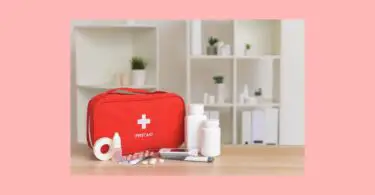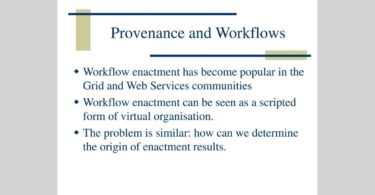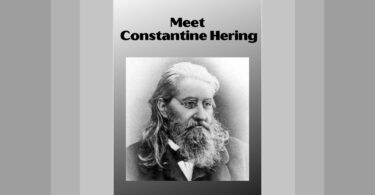I just returned from an amazing trip to Agra in the north of India, where I had the unique opportunity to participate at a Seminar on Applied Homoeopathy held by the world-renowned homoeopaths Dr. Alok Pareek and Dr. R.S. Pareek.
I wanted to share some of my experiences with all of you because I think that Dr. Pareek has created such a unique environment for the practice of homoeopathy and homoeopathic research that is unprecedented in the rest of the world.
The Pareek Hospital and Research Center was founded in 1956 by Dr. R.S. Pareek. His son Dr. Alok Pareek is head of the center since 1981. The center consists of a very modern outpatient clinic, where Dr. Pareek and his associates see more than 200 patients from all over India every day. Cases include the common day to day ailments, but most patients present with complex chronic diseases that include advanced cancers, renal failure, end-stage liver disease, psychiatric illness and many more.
Next to the clinic is a modern 50-bed inpatient hospital that provides a multitude of surgical procedures ranging from simple lumpectomies to complex cancer surgeries, and endoscopic procedures. The hospital is also equipped with an ICU and manages acute medical emergencies such as GI bleeds. All surgical patients receive pre- and postoperative homoeopathic care.
In addition, the Pareeks have a homoeopathic research center. Their center offers quite a unique opportunity for research as they have the possibility to combine their homoeopathic treatments with modern diagnostic modalities.
To illustrate with an example: A patient came to their center with an acute upper GI bleed. He had acute hematemesis, was hypotensive and critically ill. In the western world, no homoeopath would have the opportunity to treat a patient in this acute stage, as this patient would (and should) be admitted to the hospital and receive life-saving medical measures. At Pareek’s Center, this patient also received such measures: he received IV fluids and blood transfusions and he had an endoscopy, which confirmed a bleeding gastric ulcer. Instead of treating the patient with IV proton pump inhibitors, this patient received Millefolium for acute bleeding.
Following the acute treatment, the patient was treated for his gastric ulcer with his constitutional homoeopathic remedy for several months. He had serial endoscopies and complete healing of the ulcer was documented after a few months of treatment. This patient does not require life-long acid suppressive therapy with a proton pump inhibitor and is fully cured.
The seminar on applied homoeopathy was held for 5 days and consisted of morning and afternoon lectures, interspersed with life patient cases and rounds at the hospital during which we were able to observe patient case taking. The focus of the seminar was the homoeopathic treatment of advanced cancers, but we also had lectures on homoeopathy for emergencies and heart disease, and the live patient cases included developmental disorders, ocular pathology, stroke patients, and chronic skin disorders.
I quickly realized that the practice of homoeopathy in India is quite different from how we learn homoeopathy in the western world: given the high patient volume, there is hardly time for an hour-long case taking or hours of repertorization. Dr. Pareek and his colleagues seem to know their material medica by heart, back and forth, front to back – it was quite impressive to see them at work, and to observe how they can make a prescription for a patient literally after a few minutes of patient interaction.
In the treatment of advanced cancers, I took away some important lessons. Dr. Pareek often starts a cancer patient on a low potency, organ-specific remedy, rather than prescribing the patient’s constitutional remedy at once. His explanation for this is this: many patients with advanced cancers will complain only of vague symptoms such as weakness, nausea, anorexia, fatigue etc. Their vital force is very diminished and they do not have the ability to express strong individual/guiding symptoms. In those cases, it would be impossible to attempt to find a constitutional remedy. In addition, the patient’s vital force might not even tolerate a constitutional remedy on a deeper level at this stage. For that reason, Dr. Pareek often choses an organ-specific remedy, or a remedy that is indicated according to the patient’s pathology.
To illustrate this with an example: A 22 year old female developed cervical lymphadenopathy; biopsy was consistent with Hodgkins lymphoma. She initially received chemotherapy and responded well, however she relapsed about a year later and her disease then proved chemo-resistant. She had developed increasing lymphadenopathy, now associated with marked splenomegaly. Dr. Pareek prescribed Aconitum lycotonum in a low potency (C30) for 2 months – the remedy was selected based on the clinical or pathologic picture and its affinity for lymphadenopathy, rather than based on the patient’s individual symptoms.
After 2 months, the patient’s splenomegaly and lymphadenopathy had decreased substantially, her appetite improved, as did her overall well-being. She then developed a clear Pulsatilla constitution and she was continued on her constitutional remedy in her higher potency (C200).
During the seminar, we learned a great deal about various organ-specific smaller remedies and their indications, for example Asterias rubens for inflammatory breast cancer, bismuth for gastric cancers, Aloe socotrina for rectal and anal cancers and many more. We also learned about Hahnemann’s miasm theory and what an important role it has in the treatment of cancer patients. Not only was the seminar highly informative and educational, but it also was a great opportunity to meet homoeopaths from all over the world; participants came from Russia, Armenia, Turkey, Austria, Holland, Switzerland, Germany, Nepal and India.
Dr. R.S. Pareek and Dr. Alok Pareek have created an environment to practice and learn Homoeopathy that is unparalleled in the world – their work is of great importance for the future of homoeopathy and demonstrates what a crucial role homoeopathic therapy can play in the modern world and how homoeopathic doctors can combine modern medicine, diagnostic modalities and research with Hahnemannian Homoeopathy.






It is heartening to know that Mr.Pareek is practising modern diagnostic tools and surgery with homeo medicines.with more research and adapting some modern surgery homeo can show good alternative for allopathy.I wish such hospitals cost effective of course will come up more and more in India.
I like this type of seminar,how can i join the seminar.
Thanks Barbara.
Dear Barbara
Great to read you.
I attended too at dr Pareeks seminary in 2010 and it was for me
French medical doctor a very great experience .
I had also the chance to be invited by Dr Parth GP in Agra who very
Kindly allowed me to share his work .
India is for us occidental doctors a big occasion to
Learn more and help us to treat and support our cancer patient with
Homeopathy.
I would like that more French doctors attend dr Pareeks seminary.
If some read me take contact with me.
Elisabeth
we have understood about Indian practice of Homeopathy and this is unparalleled
realy nice, making a difference in homeopathic treatment.